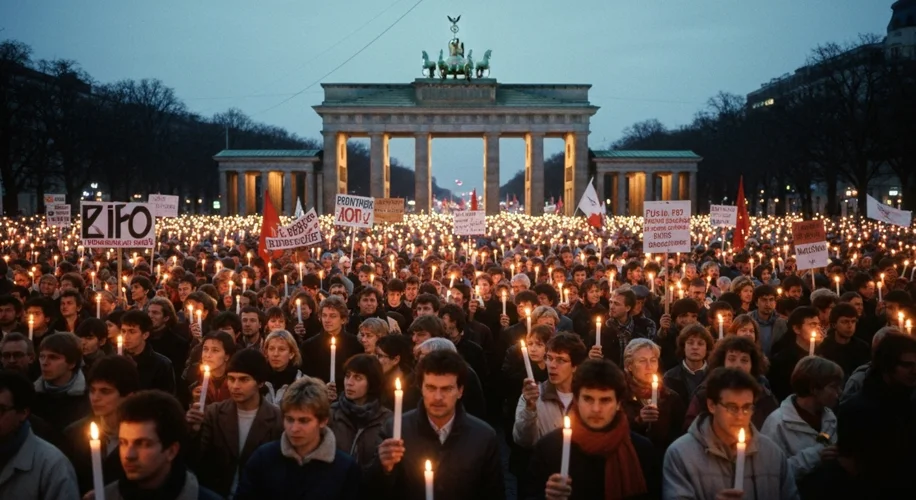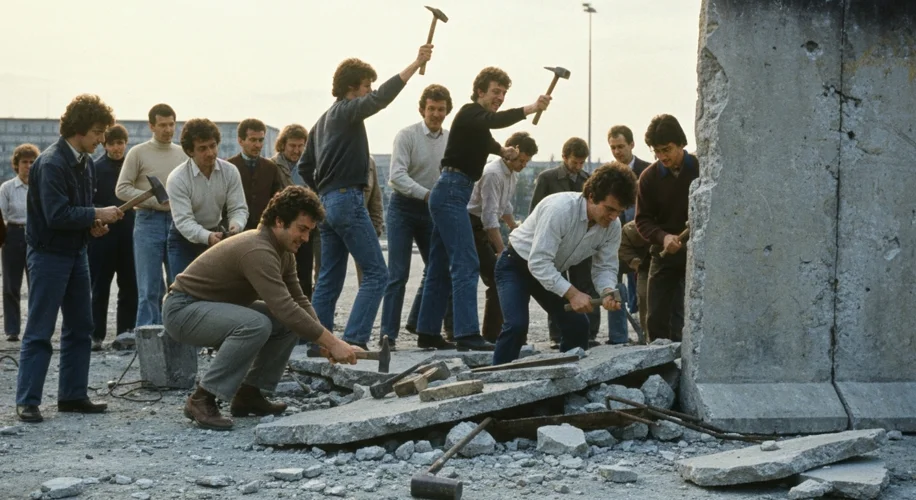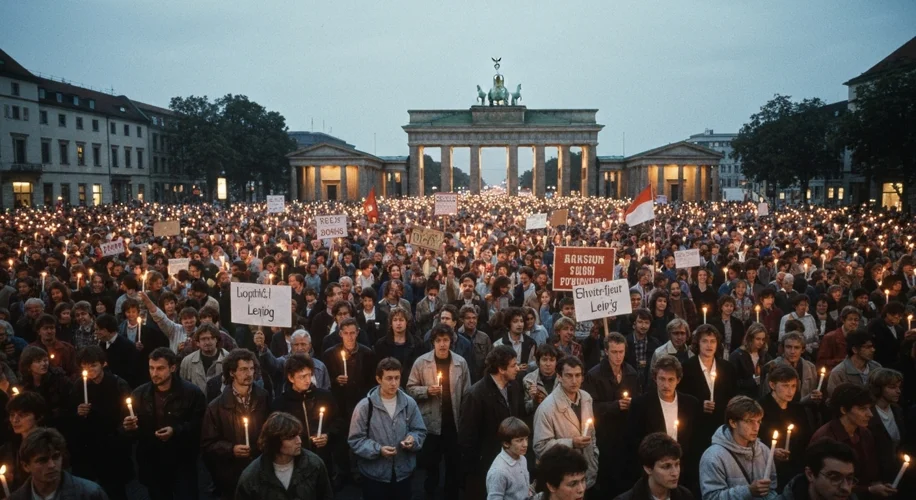For twenty-eight years, it stood as a brutal, concrete scar across the heart of Berlin, a stark symbol of a world divided. The Berlin Wall, erected in 1961, was more than just a barrier; it was a cage, locking millions behind the Iron Curtain and tearing families apart with its merciless efficiency. But in the autumn of 1989, an unstoppable tide of change began to swell, culminating in a night that would forever be etched in history: November 9th.
Imagine the scene: a chilly evening in East Berlin, the air thick with a mixture of apprehension and a burgeoning, almost unbelievable hope. For decades, crossing this divide had meant risking life and limb, facing armed guards and treacherous minefields. Families lived with the constant ache of separation, their letters often intercepted, their phone calls monitored. Parents who had seen their children grow up only through grainy photographs, siblings who had never shared a birthday cake – the wall’s shadow fell long and heavy.
One such story is that of the Schmidt family. In 1961, when the wall’s construction began, young Anna Schmidt, then only ten years old, watched in terror as her uncle, who lived just a few streets away in West Berlin, was suddenly cut off. He waved from his side, a desperate plea in his eyes, as concrete and barbed wire rose between them. Years turned into decades, and their only contact was through carefully worded postcards and the occasional, nerve-wracking phone call. Anna grew up, married, and had children, but the phantom limb of her uncle’s absence was always there.
Across the globe, seismic shifts were occurring. Mikhail Gorbachev’s policies of Glasnost and Perestroika in the Soviet Union had inadvertently opened a Pandora’s Box of dissent. Throughout Eastern Europe, citizens were demanding freedom, their voices growing louder. Hungary opened its border with Austria in May 1989, creating a new escape route for East Germans. In the GDR, protests, particularly in cities like Leipzig, became a weekly ritual. The Monday Demonstrations, starting with a few hundred people, swelled into hundreds of thousands, their chant of “Wir sind das Volk!” (We are the people!) echoing through the streets.

On November 9th, 1989, at a press conference, East German official Günter Schabowski, fumbling with his notes, announced new travel regulations that would allow citizens to apply for permission to travel abroad. When asked by a journalist, Riccardo Ehrman, when these regulations would take effect, Schabowski, unprepared, stammered, “As far as I know, it takes effect immediately, without delay.” The news spread like wildfire. East Berliners, hearing this on the radio and television, began to converge on the border crossings.
At the Bornholmer Straße crossing, Harald Jäger, the border guard commander, found himself in an impossible situation. Thousands of people were pressing against the gates, their faces a mixture of disbelief and determined expectation. Jäger, receiving no clear orders from his superiors, and fearing a catastrophic stampede, made the momentous decision. At 10:45 PM, he ordered his men to open the gates.

The scenes that followed were pure, unadulterated jubilation. People streamed into West Berlin, many weeping, laughing, and embracing strangers. West Berliners rushed to greet them, offering flowers, champagne, and heartfelt welcomes. The wall, that symbol of oppression, was suddenly porous. People climbed atop it, danced, and began to chip away at it with hammers and chisels, creating impromptu souvenirs of their newfound freedom. Anna Schmidt, hearing the news, rushed to the nearest crossing. She waited for hours, her heart pounding. When the gates finally opened, she walked through, and on the other side, amidst the throng, she saw him – her uncle, older, with more grey hair, but unmistakably him. Their reunion was a tearful embrace that transcended years of separation.

The fall of the Berlin Wall was not just a German event; it was a global one. It signaled the accelerating collapse of Soviet influence in Eastern Europe and, ultimately, the end of the Cold War. Within a year, Germany was reunified, a process that involved immense political negotiation and economic restructuring. The transition was not without its challenges, as the former East Germany grappled with economic disparities and social integration. Yet, the overwhelming sentiment was one of profound relief and optimism.
The symbolic power of that night cannot be overstated. It demonstrated the triumph of the human spirit over division and oppression. It was a testament to the power of peaceful protest and the unwavering desire for freedom. The fall of the wall reminded the world that even the most formidable barriers can crumble when people unite with a common purpose. The echoes of those falling bricks continue to resonate, a powerful reminder that walls, however imposing, are ultimately temporary in the face of human yearning for connection and liberty. The story of the Berlin Wall is a chapter of history that reminds us of what is possible when people dare to dream of a united future.

